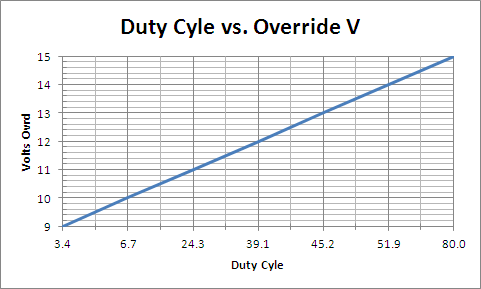
My new turbo system uses a sideways mounted air-water-air intercooler system. I wanted a straight low-restriction air flow path to the throttle body, so the intercooler sits on a platform just above the water pump. I decided to eliminate the belt driven pump and fan in favor of an electric pump and electric fan. I needed some way to control the electric water pump and electric fan.
To minimize wear and tear on pumps and electric motors and to minimize alternator load, I wanted to run my car's water pump only as fast as necessary. To prevent hot spots in the engine block or heads the water has to circulate slowly during warm up. Mechanical pump cars normally use a thermostat bypass hose to allow cold circulation. With an electric pump, I decided to run the pump very slow during warm up and go full speed when the engine reached desired operating temperature. This is the best way to do things when not using a mechanical pump, thermostat, and bypass hose system.
An electric pump generally should not be run dead-headed into a restriction. Running dead headed will increase motor current significantly. This heats the motor and needlessly strains the vehicle's electrical system. Heat can damage the pump, the higher current wears down brushes faster. Using a pulse width modulated controller will allow water to circulate slowly during warm up and evenly warm the engine while also reducing battery load to just a few amps. As the engine warms the PWM controller will step up motor speed, running the motor just fast enough to maintain proper operating temperatures.
I bought several sample PWM controllers. I measured pulse rate, peak current, average current, and electrical system noise. Some PWM controllers were not even PWM!! Of all the controllers I tested in summer of 2015, this Derale controller was best. Derale PWM Controller 16795
The Derale PWM controller had a few things I needed to work around:
1.) The Derale PWM cannot accept an existing external sensor on regular sensor ports, like an existing gauge sensor
The reason for this is the sensor port is sourced from 5 volts through a 12k resistance, and the sensor has pulses during controlled duty cycle operation. It works OK as it is on the supplied Derale thermistor. This makes the sensor a little more susceptible to external electrical noise, and prevents using external voltage as a control. This is not an issue in their intended use, but I would not have done a controller that way. I'm eventually going to build my own universal PWM controller, but for now I'm using the Derale
2.) The PWM mode is relatively narrow in voltage or resistance range. With relatively narrow external resistance changes the output will move from off, through pulse mode, into full-on operation.
3.) The Override Circuit has great utility for my special water pump application. The AC override can let someone set the idle speed of a motor
Measured Data
The data below was measured on a sample Derale controller:
| resistance | Sens Voltage | Sens uA | Temp | Start ramp mA | Voltage | Ramp ∆% | Sens R KΩ | Drive duty % |
| 60000 | 4.17 | 69.4 | 100 | |||||
| 49000 | 4.02 | 82.0 | 110 | 0.171 | NA | 0.0 | 15.6 | 3 |
| 40000 | 3.85 | 96.2 | 120 | 0.195 | NA | 12.3 | 13.7 | 50 |
| 32863 | 3.66 | 111.5 | 130 | 0.215 | NA | 20.5 | 12.9 | 99 |
| 27000 | 3.46 | 128.2 | 140 | |||||
| 23238 | 3.30 | 141.9 | 150 | |||||
| 20000 | 3.13 | 156.3 | 160 | |||||
| 18404 | 3.03 | 164.5 | 165 | |||||
| 16436 | 2.89 | 175.8 | 170 | |||||
| 14794 | 2.76 | 186.6 | 175 | |||||
| 13316 | 2.63 | 197.5 | 180 | |||||
| 12048 | 2.50 | 207.9 | 185 | |||||
| 10901 | 2.38 | 218.3 | 190 | |||||
| 9893 | 2.26 | 228.4 | 195 | |||||
| 8979 | 2.14 | 238.3 | 200 | |||||
| 8161 | 2.02 | 248.0 | 205 | |||||
| 7417 | 1.91 | 257.5 | 210 | |||||
| 5000 | 1.47 | 294.1 | ||||||
| 4000 | 1.25 | 312.5 | ||||||
| 3000 | 1.00 | 333.3 | ||||||
| 2000 | 0.71 | 357.1 | ||||||
| 1000 | 0.38 | 384.6 | ||||||
| 0 | 0.00 | 416.7 | ||||||
| Override port | factory V | Sen R | F | half step | ||||
| Voltage | Off | On | % | 3.16 | 20609 | 160 | 18404.48 | |
| 9 | 28 | 1 | 3.4 | 2.89 | 16436 | 170 | 14794.24 | |
| 10 | 28 | 2 | 6.7 | 2.63 | 13316 | 180 | 12048.22 | |
| 11 | 28 | 9 | 24.3 | 2.38 | 10901 | 190 | 9893.34 | |
| 12 | 28 | 18 | 39.1 | 2.14 | 8979 | 200 | 8160.985 | |
| 13 | 34 | 28 | 45.2 | 1.91 | 7417 | 210 | ||
| 14 | 26 | 28 | 51.9 | |||||
| 15 | 7 | 28 | 80.0 | |||||
| Override port independent of supply voltage | ||||||||
| Derale Fan Controller | ©w8ji 2015 | |||||||
Reducing Derale Temperature Range
The radiator OUTLET WATER temperature has to be some amount below desired engine temperature, or engine temperature will not be stable. The exact amount the outlet water is below the desired temperature varies with water flow rate and how many BTU the engine sheds at any instant of time. The exact temperature is found quickly through experiment. If the engine temp stabilizes 20F above the water outlet thermostat setting, the radiator fan control temperature should be reduced by the overage temperature amount.
My application used a water pump speed controller set to 160F. After a hard pass with the fan Derale controller set at 160F, my engine would be at 180F. This was 20F over the desired temperature. My application required Derale activation at 180(run)-160(t-stat) = 20F over temp. 160F(radiator outlet fan) - 20F (engine overage) = 140F
To handle hard passes, my system needed the radiator outlet to be somewhere around 140F. Since the Derale would not go below around 150F, I paralleled a resistor across the Derale sensor. My application required a 33K resistor. A 33K resistor in parallel with the sensor made the Derale controller behave as below. Setting the Derale at 2.77V sets the water outlet tank at approximately 140F. The exact temperature should be verified with a thermometer :
| Sens Voltage | Temp |
| 3.20 | 100 |
| 3.11 | 110 |
| 3.01 | 120 |
| 2.89 | 130 |
| 2.77 | 140 |
| 2.66 | 150 |
| 2.55 | 160 |
| 2.48 | 165 |
| 2.39 | 170 |
| 2.30 | 175 |
| 2.21 | 180 |
| 2.12 | 185 |
| 2.03 | 190 |
| 1.94 | 195 |
| 1.85 | 200 |
| 1.76 | 205 |
| 1.68 | 210 |
Override Circuit
The override circuit was marketed as a 60% speed feature, such as running a fan when an A/C system is turned on. This implies the override is a steady 60% rate, which it is not.
The override circuit actually changes pulse width in a very linear fashion with voltage. This allows the override to be used as a very useful feature.
If we add a 5k to 10k ohm adjustable control in series with battery voltage and the override terminal, or better still add an external regulated voltage supply, the Derale controller will have a fully adjustable minimum speed! This is an excellent feature for water pumps or other controls. Pump motor speed can be tailored for normal warm up without a bypass or thermostat, and with a little additional electronics, the pump can be forced to ~80% speed or higher under wide open throttle.
Using the override port does not remove the thermal sensor control. The override port just sets a controlled minimum speed.

Sensor Characteristics
For use with external sensors:
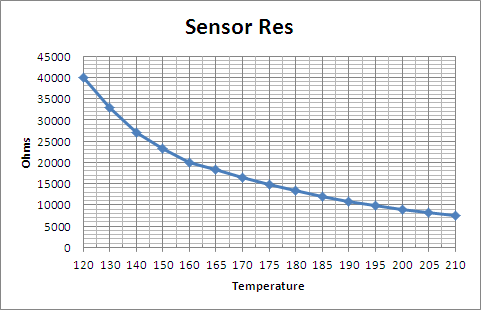
Note: The sensor leads carry high frequency waveforms related to switching times. The leads cannot be bypassed, must be ground isolated, and should be kept away from noise sources or noise sensitive systems.
Ford Sensor
Just for reference.. the Ford ECT sensor data is:
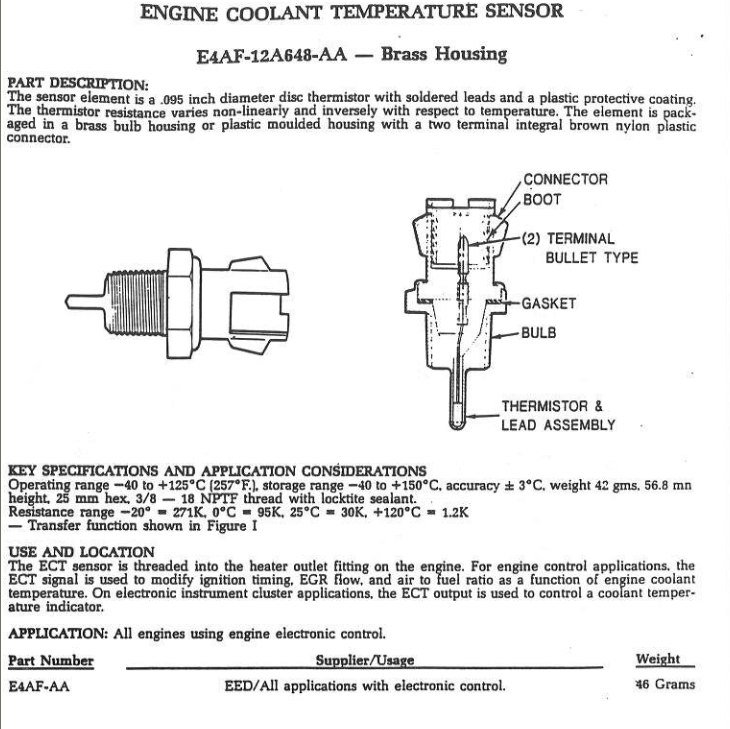
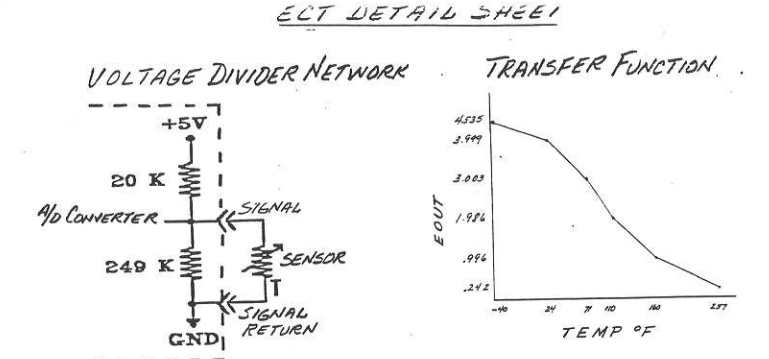
The Ford ECT transfer function is:
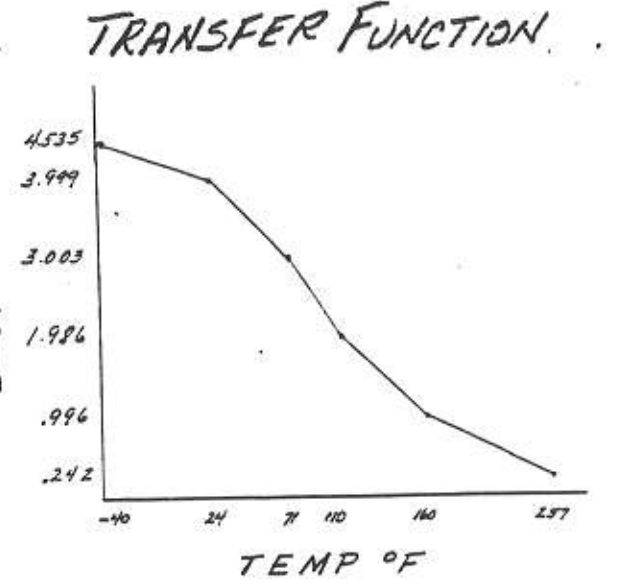
The Derale controller is not easily adaptable to the Ford (or any other) sensor. Derale provides the following sensor (left side below compared to hose barb fitting):
I made a sensor adaptor out of a hose barb fitting. This took minimal time and worked perfectly.
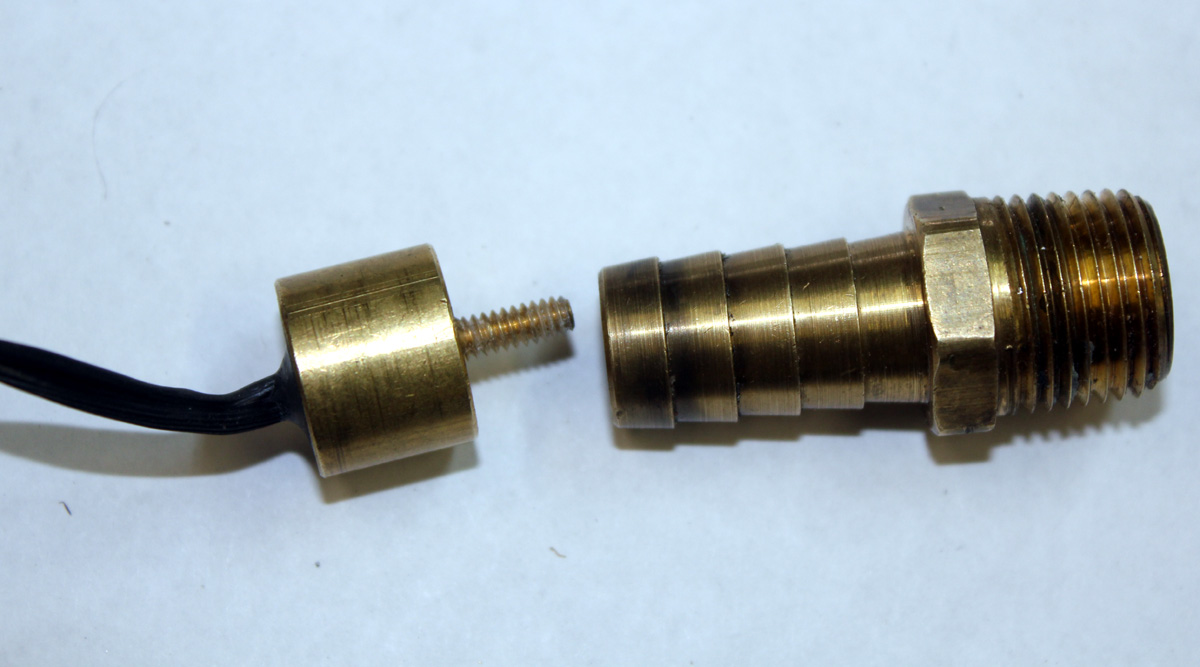
Derale intends for their sensor to be screwed onto a brass probe that pokes though the radiator fins at or near the radiator outlet. That is a good location for running the radiator fan, but I wanted to have a controller on my water pump. The water pump has to run slow during warm-up, and come up to full speed when the engine water is hot. I needed to control the water pump from water temperature at the exit point by the thermostat housing.
Many sensors are improperly designed. The thermistor should be thermally connected to whatever is being measured, NOT to the threads or the housing. Connecting the temperature sensing element to the housing can cause a problem. The housing becomes part of the thermal measurement circuit, rather than just the probe tip that physically contacts the air or water stream we are trying to measure. A poor sensor design causes the sensor to partly read manifold temperature and partly read water temperature.
My goal was to have proper sensor operation while finding a way to use the original Derale thermistor assembly. I decided to make an adaptor (adapter) from a standard brass hose barb that fit my manifold port, a short piece of brass or copper rod, and a chunk of Teflon rod to seal and thermally isolate the probe from housing.
I machined the following parts. I make a barbed rod for my probe tip. I put a taper on the ribs that allow it to push into a hole and lock, just like a normal barb is machined. This is the tip that sticks down into the water to probe the flowing water:
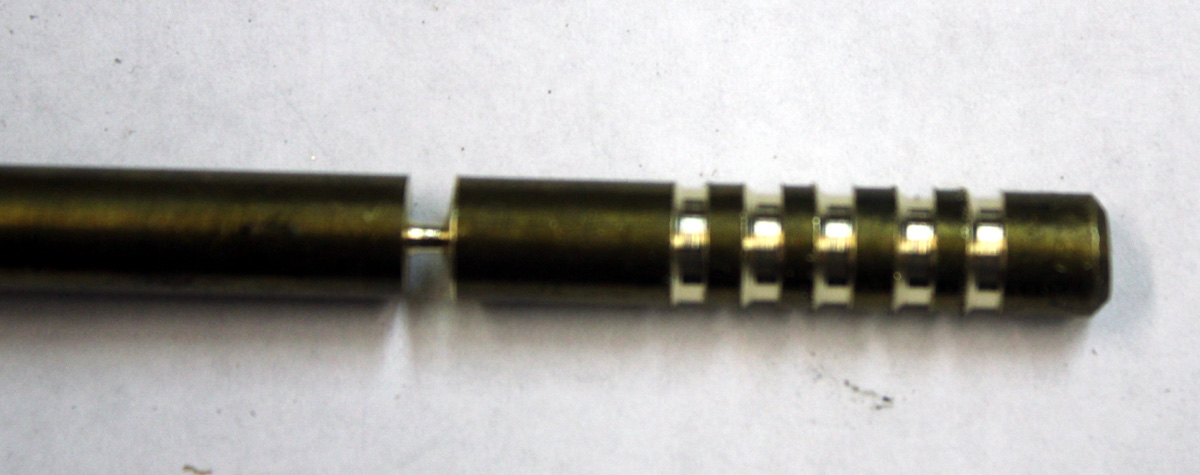
I machined a Teflon rod into an insert that had interference fit to the inner probe and the outer threaded body:
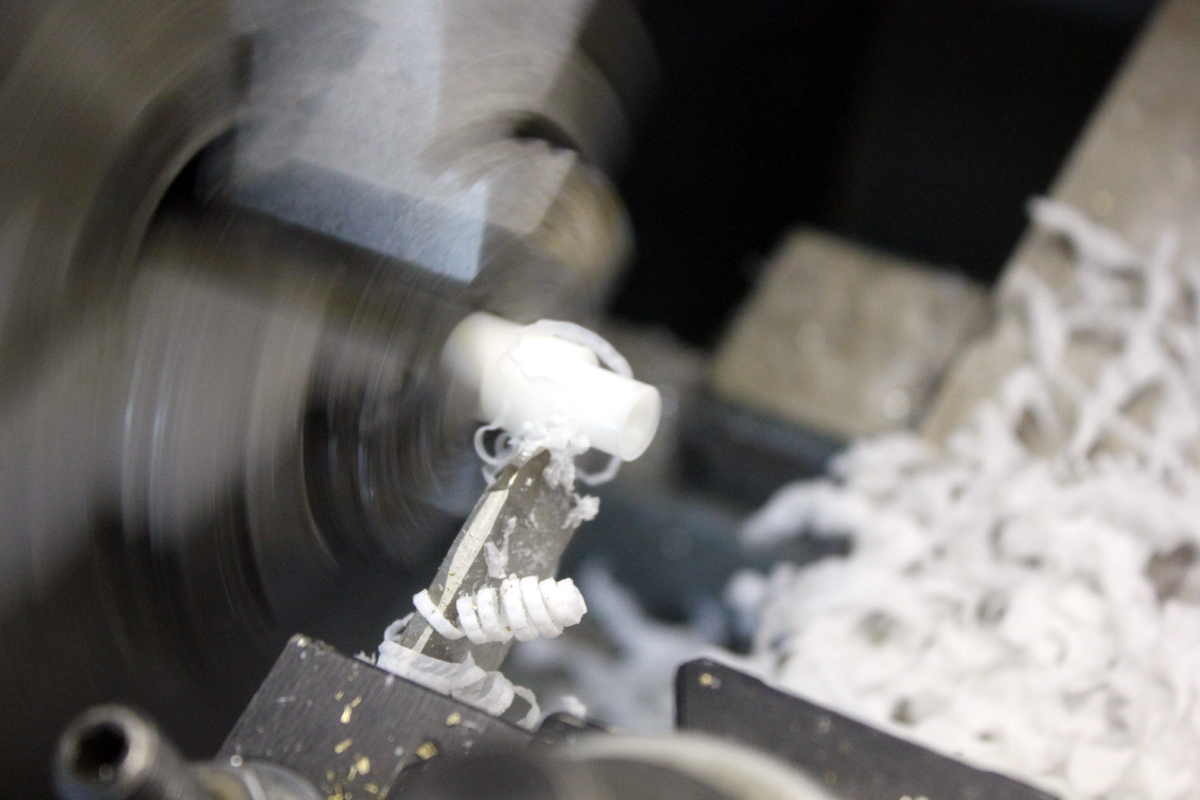
The result has a large lip for the water side and a step to match the inside of the threaded fitting. This makes the water push it in tighter, no matter what the pressure. This Teflon insert presses with an interference fit down into the cut off and drilled hose barb fitting:
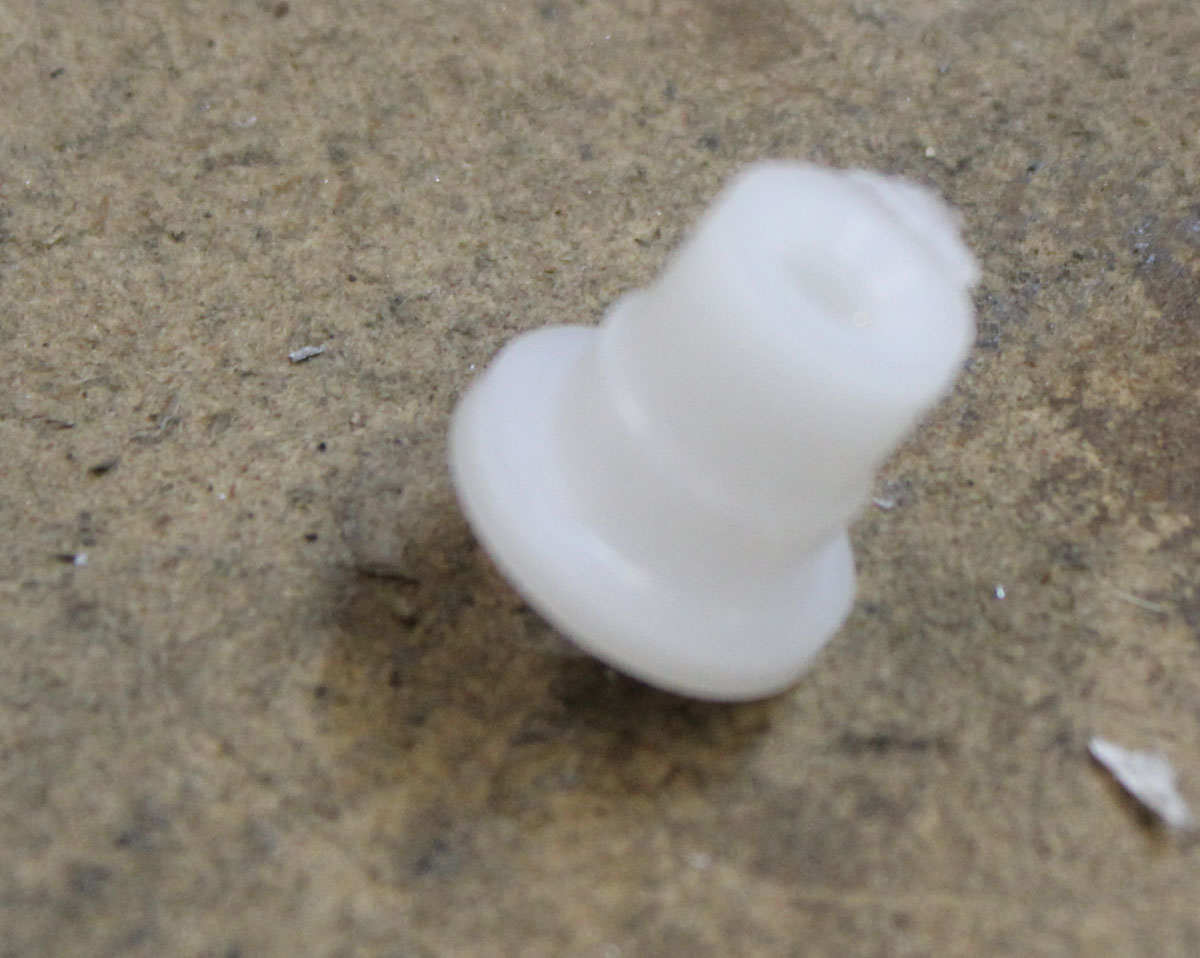
The probe ribs were machined into a barb angle. The severe interference fit, in combination with the lip and barb steps, make a very tight pressure seal. The .250 inch OD brass center probe insert has .075" deep barb ribs that allow the insert to be pressed in, but seal and lock it in place against pressure. Additional sealer was not necessary. It was leak and blow out tight even at a 100 psi test:
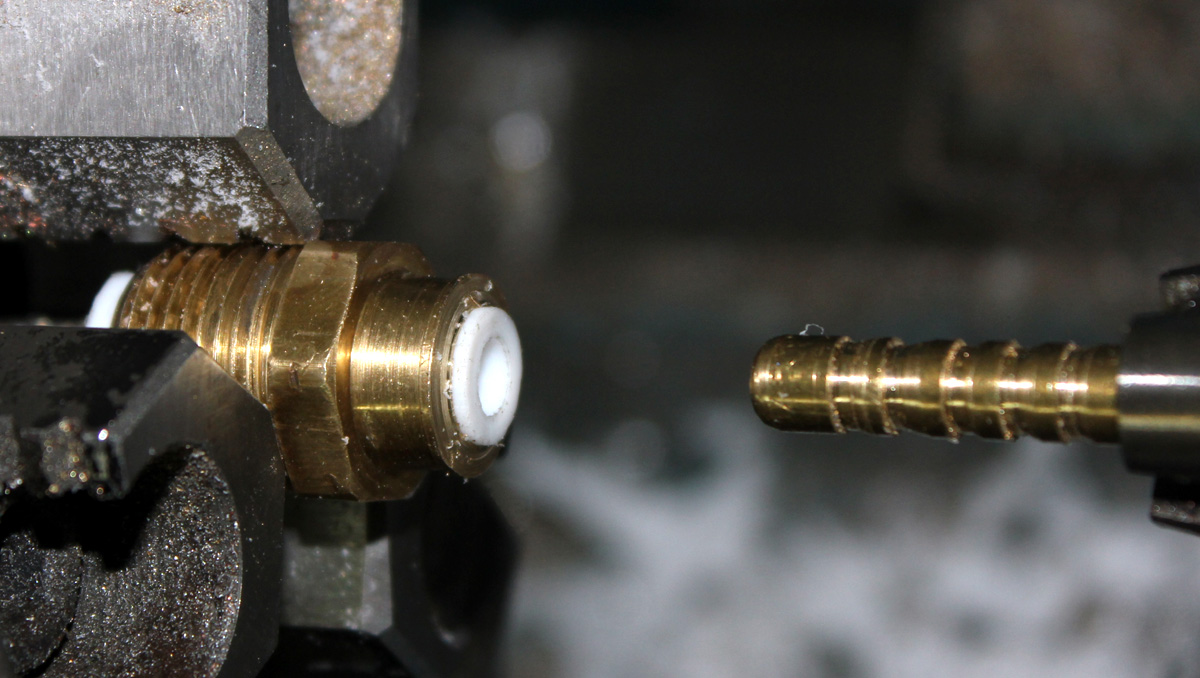
The final result look like this. The Derale sensor screws into the blind 6-32 tapped hole on the right. The tip sticks down into the water. The Teflon, which has very low thermal conductivity, prevents manifold temperature from skewing water temperature readings:
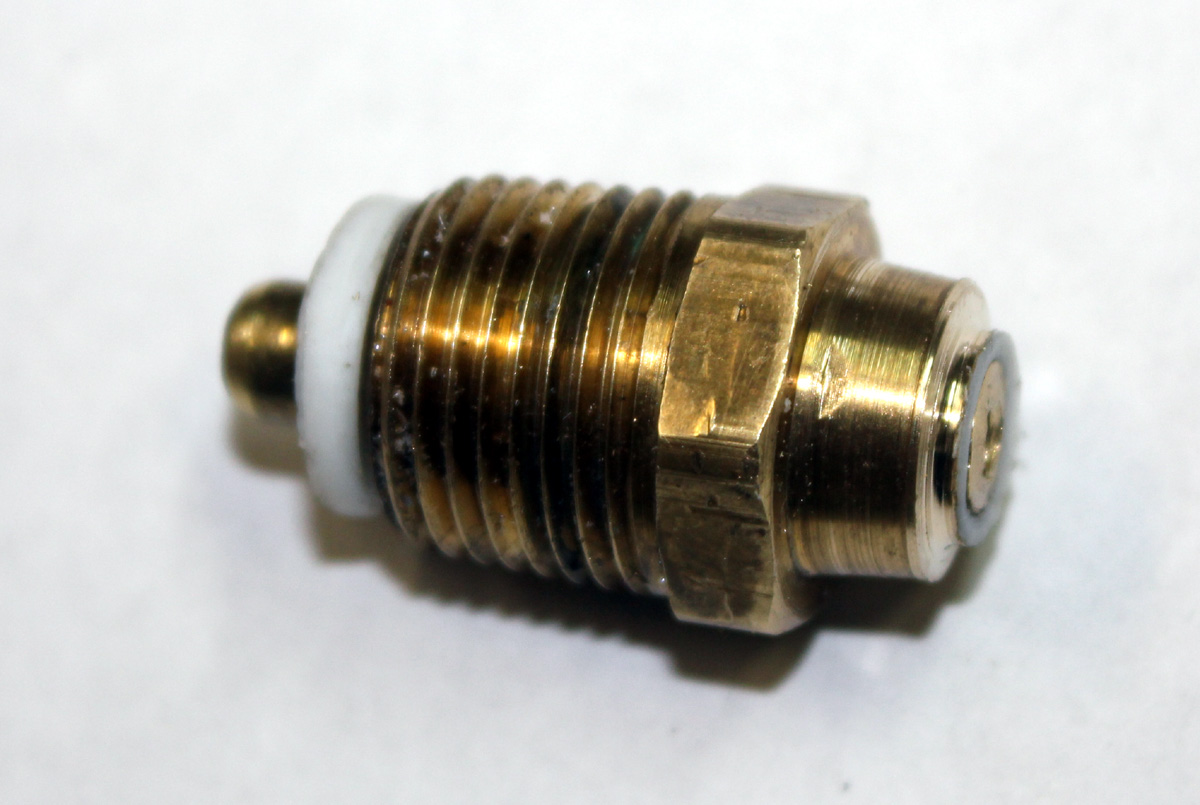
The 6-32 hole in the insert allows the Derale thermistor assembly to be attached like this:
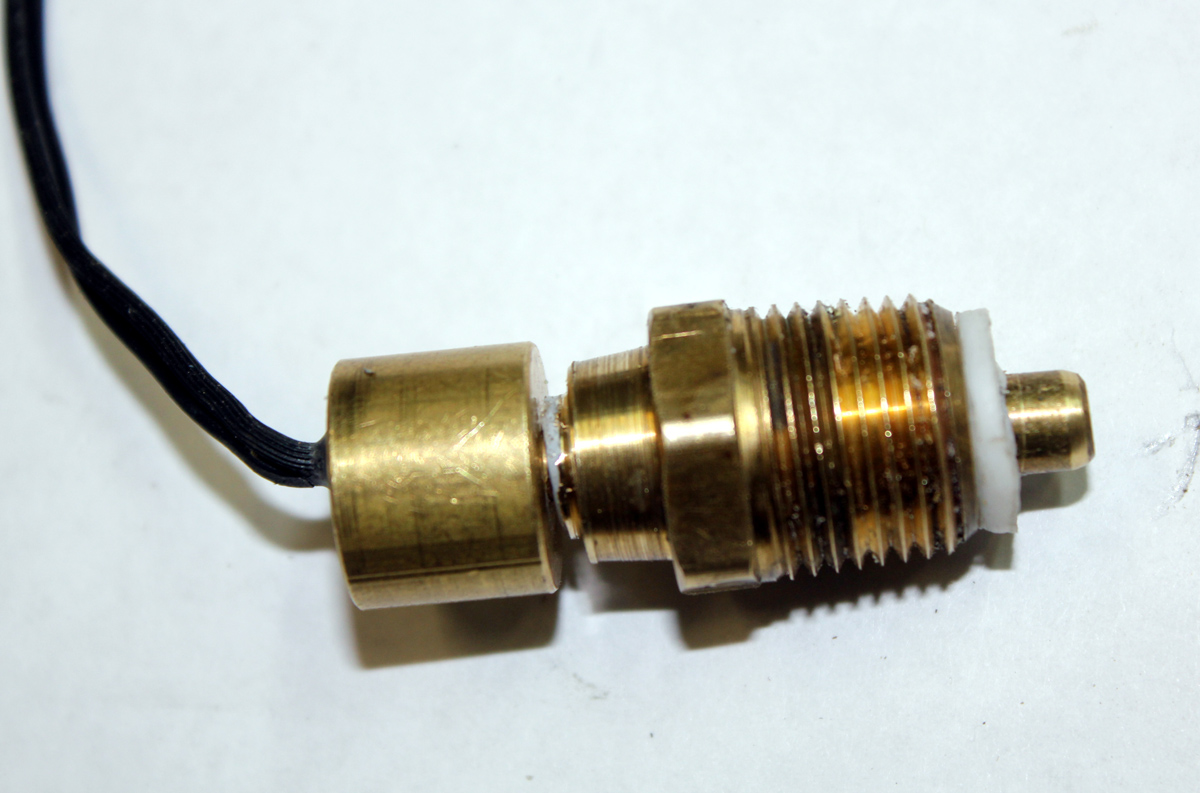
As an added feature, I run an electrical connection from the sensor housing back to my car electronics. I did this by adding a lug between the Derale sensor and the threaded rod that sticks into the water. This lug lets me sense the small current that flows when the tip has contact with the coolant. When my coolant gets low, I get a warning light.